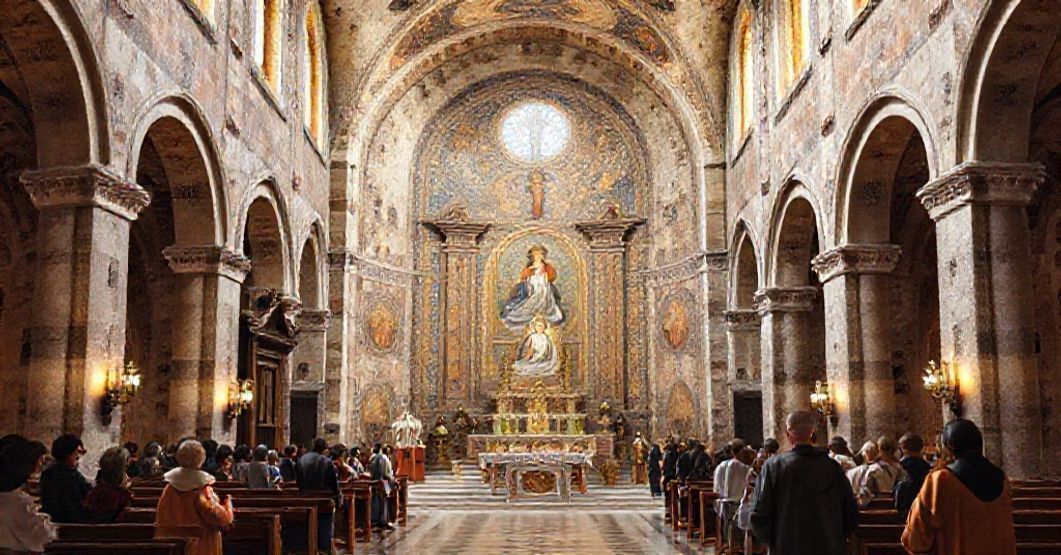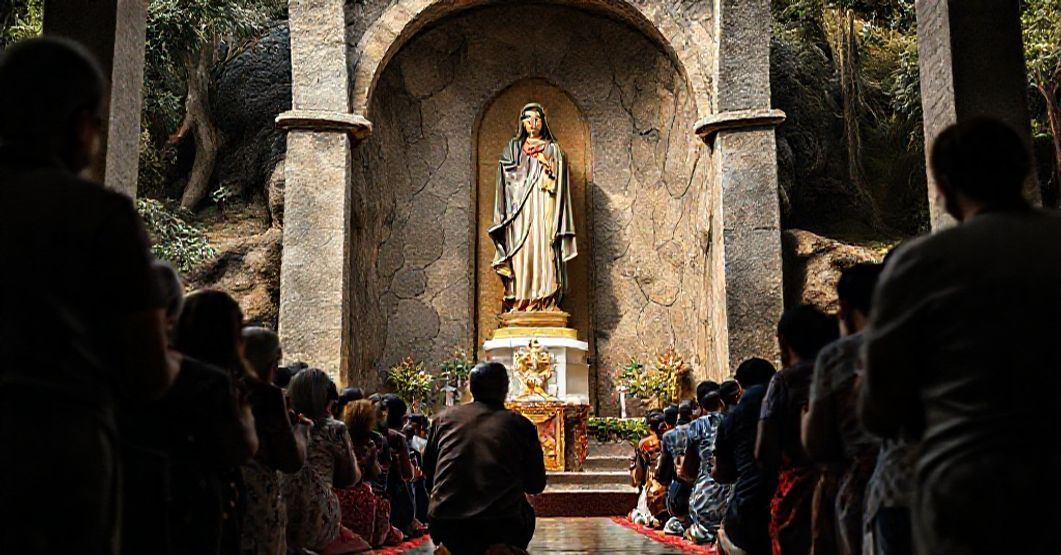Antipopes of the Antichurch



















Timeline of this heretical pontiff
Encyclical Letters
+ 15 posts1959
+ 7 posts1961
+ 4 posts1962
+ 2 posts1963
+ 2 postsApostolic Exhortations
+ 3 postsApostolic Constitutions
+ 93 posts1958
+ 6 posts1959
+ 87 postsMotu Proprio
+ 15 posts1958
+ 1 posts1959
+ 1 posts1962
+ 11 postsApostolic Letters
+ 151 posts1958
+ 4 posts1959
+ 63 posts1960
+ 78 posts1961
+ 1 posts1962
+ 4 posts1963
+ 1 postsSpeeches
+ 99 posts1958
+ 2 posts1959
+ 26 posts1960
+ 29 posts1961
+ 16 posts1962
+ 24 postsMessages
+ 6 posts1959
+ 4 postsHomilies
+ 4 postsLetters
+ 152 posts1958
+ 1 posts1959
+ 48 posts1960
+ 32 posts1961
+ 31 posts1962
+ 30 posts1963
+ 10 postsNot categorized
+ 1 posts1958
+ 1 postsNews feed


Rosas caelitus (1959.07.23)
The Latin text entitled “Rosas caelitus” (23 July 1959) is an apostolic brief of John XXIII, in which he confers the title and juridical privileges of a minor basilica on the church of St Thérèse of the Child Jesus at Anzio in the diocese of Albano. It praises the sanctuary’s architecture, treasures, relics, and popular devotion, especially invoking the protection attributed to Thérèse during wartime, and then, invoking “apostolic authority,” solemnly elevates the church, grants it associated rights, and annuls any contrary provisions. The entire text, seemingly modest and devotional, is in reality a juridical and symbolic consolidation of a new cultic orientation that prepares and manifests the rupture which will culminate in the conciliar revolution; it is a sugar-coated preface to the demolition of the visible structures of the Catholic Church.


Praecipuo Beata Maria V. «Madonna di Caravaggio» (1959.07.30)
The document attributed to John XXIII proclaims that the so‑called “Madonna di Caravaggio” is to be recognized as the principal heavenly Patroness of the Diocese of Caxias (Brazil), grounding this decision on the alleged fervent Marian devotion of local faithful, the transplanted Italian cult, and the existing shrine at Farroupilha, while granting her all liturgical honors accorded to a diocesan principal Patron. Its polished Latin, canonical formulas, and sentimental Marian rhetoric veil the same poisoned root: the consolidation of the conciliar revolution’s counterfeit authority through the instrumentalization of an unapproved apparition cult and the manipulation of popular piety to anchor an emerging neo‑church in place of the Catholic Church.


Quasi arx (1959.07.31)
The Latin document “Quasi arx,” issued on 31 July 1959 under the name of John XXIII, grants the title and liturgical privileges of a minor basilica to the cathedral church of Sherbrooke in Canada, dedicated to Saint Michael the Archangel, praising its neo-gothic architecture, material splendour, and the piety of clergy and faithful, and solemnly decreeing the perpetuity of this new dignity.


Respice Stellam (1959.09.09)
The text issued under the name “Respice Stellam” (9 September 1959) is an act by John XXIII declaring the Marian title “Beata Maria Virgo de Guadalupe d’Estremadure” as principal patroness of the Diocese of Imma Tellus and Point-à-Pitre (Guadeloupe) and titular of its cathedral. With a brief citation of St Bernard (“Respice stellam!”), it solemnizes pre-existing local devotion and grants the corresponding liturgical rights, in a tone of pastoral benevolence and apparent continuity with traditional Marian piety.
Varia
Announcement:
– News feed –implemented
– Antipopes separate web sites with their all documents refutation – in progress
